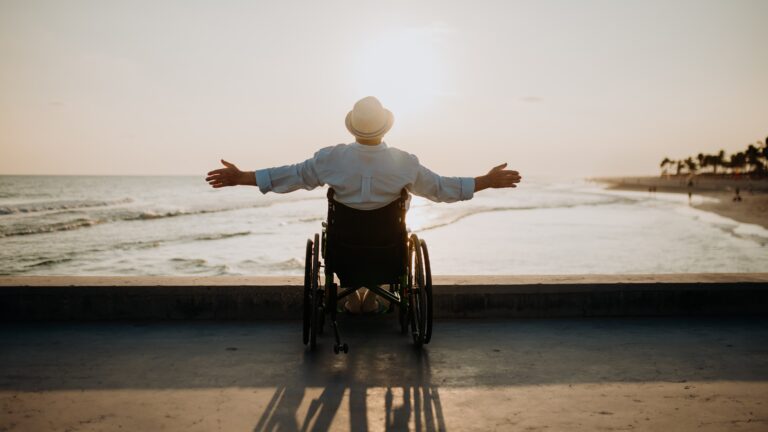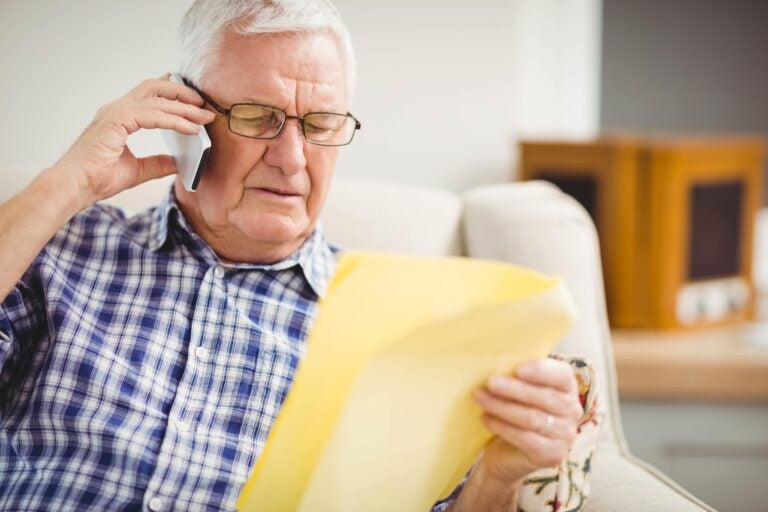[OPENING DISCLOSURE]
For reverse mortgage loans: The borrower must meet all loan obligations, including living in the property as the principal residence and paying property charges, including property taxes, fees, hazard insurance. The borrower must maintain the home. If the homeowner does not meet these loan obligations, then the loan will need to be repaid.
Protection Reverse Mortgages Offer for Spouses
Reverse mortgages have long helped older homeowners tap into their home’s equity for extra cash flow in retirement. But in the past, there were concerns about what might happen to a surviving spouse who is not listed as a borrower on the loan. Could they stay in the home? Would they face unexpected financial stress?
Today, the rules have evolved to offer important protections for non-borrowing spouses. These updates are designed to give couples more security and confidence when considering a reverse mortgage as part of their retirement plan.
Who Qualifies as a Non-Borrowing Spouse?
An eligible non-borrowing spouse is the spouse of a reverse mortgage borrower who is not listed on the loan but meets the Department of Housing and Urban Development (HUD)’s program requirements. In general, this means:
- They were legally married to the borrower at the time of loan closing and remained married until the borrower’s death, or remain married if the borrower has been living in a healthcare facility for more than 12 consecutive months.
- In certain cases, HUD also recognizes spouses who could not legally marry the borrower at the time of loan origination due to restrictions on same-sex marriage, provided they later became legally married and remained married until the borrower’s death (or remain married if the borrower is in a healthcare facility).
- They must also live in the home as their primary residence and continue to do so.
How Are Non-Borrowing Spouses Protected?
Protections introduced in 2014 allow surviving, non-borrowing spouses to defer the loan’s “due and payable” status upon the death of the last remaining borrower. To be eligible for this protection, a non-borrowing spouse must meet certain conditions:
- The reverse mortgage case number must have been assigned on or after August 4, 2014.
- The non-borrowing spouse must have been legally married (as defined by state law) to the borrower at the time of the loan closing and remained married until the borrower’s death.
Further improvements came in 2021, when HUD expanded protections. Now, a non-borrowing spouse may remain in the home even if the borrowing spouse has lived in a healthcare facility for more than 12 consecutive months.
Importantly, these protections apply only when eligibility requirements are met. Eligible spouses are still responsible for using the home as their primary residence, maintaining the home, and staying current on property charges, including property taxes, hazard insurance, and fees. If these conditions are not met, the loan becomes due.
What Is a Mortgagee Optional Election?
For reverse mortgage loans issued before August 4, 2014, lenders may choose a process called a Mortgagee Optional Election (MOE) Assignment. Instead of moving forward with foreclosure when the last borrower passes away, the lender can assign the loan to HUD.
When this happens, HUD provides a similar deferral of the loan’s “due and payable” status for an eligible non-borrowing spouse. This means the spouse may remain in the home until another maturity event occurs, such as the home no longer being their primary residence.
Recent Updates Offer More Flexibility
On September 23, 2019, HUD updated MOE assignment guidelines even further. One of the biggest changes was removing the requirement that a surviving non-borrowing spouse prove they could obtain a good and marketable title to the home or demonstrate a legal right to remain in the property for life.
This change was designed to ease one of the toughest burdens during a time of loss. However, it’s important to note that this update applies only to “Eligible Surviving Non-Borrowing Spouses” under MOE Assignments for reverse mortgage loans with case numbers issued before August 4, 2014. Equally important, the update does not remove the requirement that the non-borrowing spouse continue to use the home as their primary residence.
The Bottom Line
For all couples considering a reverse mortgage, planning ahead is still the best way to protect a spouse. That means making sure property taxes and homeowners insurance remain current, and possibly working with trusted advisors such as an estate planner, insurance agent, or financial planner. With careful preparation, non-borrowing spouses can feel more secure about staying in their homes.
[CLOSING DISCLOSURES]
The right to remain in the home is contingent on paying property taxes and homeowner’s insurance, maintaining the home, and complying with the loan terms.
This article is intended for general informational and educational purposes only and should not be construed as financial or tax advice. For more information about whether a reverse mortgage may be right for you, you should consult an independent financial advisor. For tax advice, please consult a tax professional.



